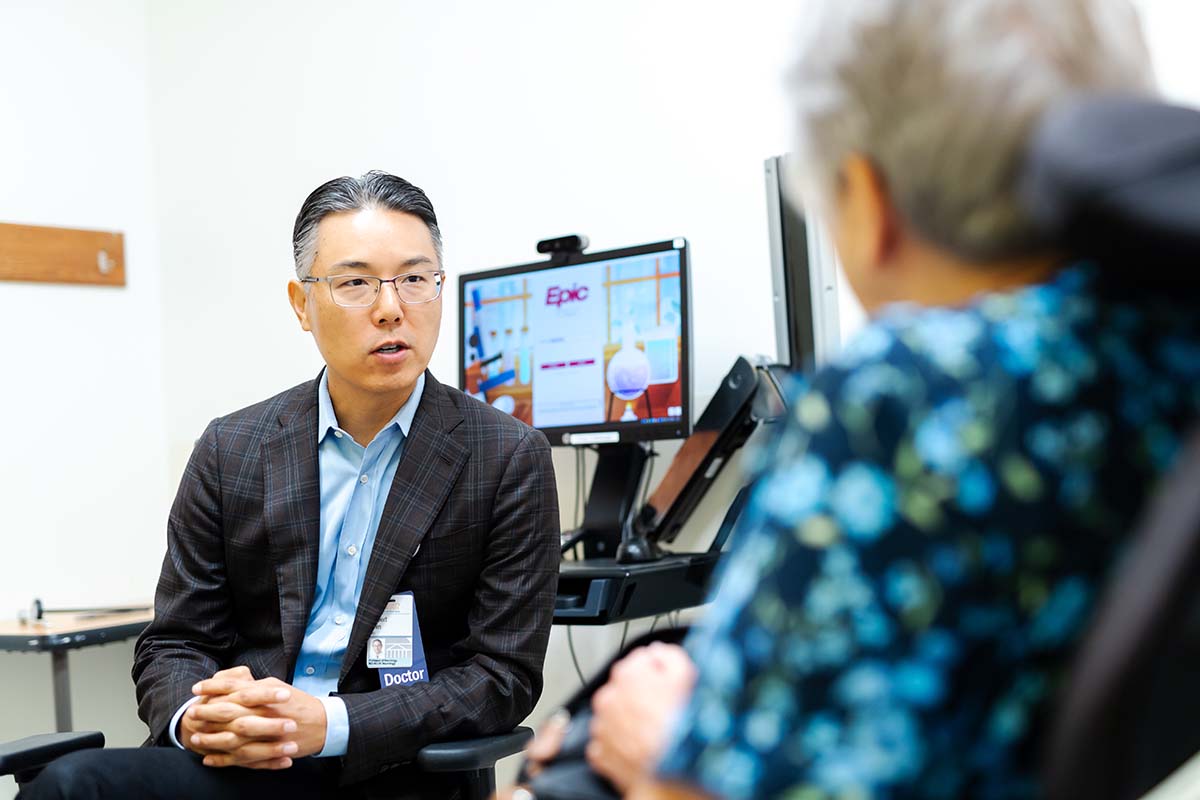Health
Kids and warts: An ultimate guide – CHOC
What are warts and how can they be treated and prevented?
Warts are a common childhood ailment – and almost always nothing to worry about. Here, CHOC pediatrician Dr. Swati Gandhi provides an overview of warts, including the types, how they are spread, what parents can do at home and when to call the doctor.
What are warts?
Warts are small, firm, rough bumps on the skin. They’re common in kids and can affect any area of the body. They can be flesh-colored, or lighter or darker than the skin that surrounds them.
Sometimes they have tiny black dots in them, which are actually clotted blood vessels. Warts are often seen around the fingernails, on the feet, on the face, and near the knees.
Anybody can get warts, but kids get them more often than adults do. Many kids get warts, although some kids never get any warts at all.
The good news is that most warts won’t cause illness or a health problem. And a bothersome wart can be removed by a doctor.
Why do kids get warts?
Warts are caused by an infection with a virus in the human papillomavirus (HPV) family. There are many types of HPV, which can affect different parts of the body, says Dr. Gandhi.
Sometimes warts are sexually transmitted and appear in the genital area. The HPV viruses that cause these are different from the viruses that cause warts on other parts of the body.
HPV viruses that cause warts can pass from person to person through close physical contact or from touching something that a person with a wart touches, like a towel, bathmat or a shower floor.
Kids who bite their fingernails or pick at hangnails are at risk for warts because they create open areas for a virus to enter and cause a wart. A tiny cut or scratch can put any area of skin at risk for a wart. Also, picking at a wart can spread warts to other parts of the body. That’s why it’s important to avoid picking, rubbing or scratching a wart, whether it’s on another person or on your own body.
How long warts take to develop can vary. They can grow very slowly and may take weeks or months to develop after someone is exposed to the virus.
These viruses are like other germs. They love warm, moist places like small cuts or scratches on your hands or feet. Once the virus finds a nice warm place on the skin, a wart begins to develop. Warts can grow for many months — sometimes a year or more — before they are big enough to see.
How do warts look and feel?
Most warts don’t hurt. But a wart can be annoying if it’s on a part of your body that gets bumped or touched all the time.
Different kinds of warts grow on different parts of the body. Some warts are smooth and flat. Some are big, rough bumps. Others are tiny and grow in clusters. They can be the same color as the skin, or darker or lighter. Sometimes they have tiny black dots in them.
What are the types of warts?
There are four types of warts, Dr. Gandhi says:
- Common warts usually grow on fingers, hands, knees, and elbows. A common wart is rough and dome-shaped.
- Flat warts are small and about the size of a pinhead. They’re smoother than other kinds of warts and have flat tops. Most kids who get flat warts have them on their faces, but flat warts can also grow on arms, knees or hands. There can be as many as 100 flat warts all clustered together.
- Planter warts are found on the bottom of the foot. While most warts are painless, a plantar wart can really hurt. It can feel like you have a stone in your shoe. To prevent plantar warts, do not walk barefoot in public places — like a gym locker or at a public pool. Also, change your shoes and socks every day and keep your feet clean and dry.
- Filiform warts have a finger-like shape and usually is flesh-colored. They often grow on or around the mouth, eyes, or nose.
How are warts treated?
Dr. Gandhi says there are a few ways to get rid of warts:
- Medicines can be purchased over the counter or provided by a doctor. These contain mild acid that removes the dead skin cells on the wart. An adult can apply the medicine or the child can wear a medicine patch in that spot. Over time, the wart crumbles away from the healthy skin.
- Cryotherapy is when a pediatrician uses a special chemical (sometimes containing liquid nitrogen) to freeze the wart. A scab usually forms as the skin heals. This treatment is usually repeated every one to three weeks for a few months to fully kill the virus that causes the wart.
- Laser treatment may be used for warts that are stubborn and haven’t gone away with other kinds of treatment. A tiny laser can be used to zap a plantar wart or other wart. It may need to be repeated a few times to get rid of deep plantar warts.
- Other treatments might include burning or scraping the wart off using special tools.
If your child has a wart, treatment will be based on factors like where the wart is and how well your child can tolerate the different options. Sometimes the doctor will recommend a combination of treatments.
The wart may come off more quickly if treated in the doctor’s office, but this might take several visits. If treated at home with over-the-counter remedies, removal can take much longer. Sometimes it takes weeks or months to get results. But eventually the wart should crumble away from the healthy skin.
Wart medicines contain strong chemicals and should be used with care because they can also damage healthy skin.
Wart treatment doesn’t always work. And sometimes a wart can come back because HPV can stay in the body for a while.
Finally, some people believe duct tape can be used to remove wart. This is not a proven remedy, Dr. Gandhi says, and can cause problems for children with sensitive skin.
How can parents help with warts?
Most warts can be handled at home. Here are Dr. Gandhi’s suggestions for what parents can do to help:
- Soak the wart in warm water for at least 10 minutes.
- Remove dead skin on the wart’s surface by filing with an emery board (that’s never going to be used for nails) before applying medicine. Be careful not to file into the normal skin around the wart.
- Apply medicine (over-the-counter or prescription) to the wart. Keep the area covered while the medicine works.
- Wash your hands after touching the wart.
Parents ought to tell their child:
- not to rub, scratch, or pick at the wart because this could spread the virus to another part of the body or cause the wart to get infected
- not to share towels or other personal items with others
How can warts be prevented?
It’s not always possible to prevent warts. Avoiding contact with the viruses that cause them is hard because they’re so common.
But it can help to avoid sharing things like towels, socks, or shoes. It’s always a good idea to teach kids to wash their hands and skin often. If your child has a cut or scratch, use soap and water to clean the area because open wounds are more likely to develop warts and other infections.
Encourage kids to wear waterproof sandals or flip-flops in public showers, locker rooms and around public pools (to help protect against plantar warts and other infections, like athlete’s foot).
When to call the doctor about warts?
Worts are mostly harmless but Dr. Gandhi recommends parents contact their pediatrician if:
- a young child or infant has a wart anywhere on the body;
- a child of any age has a wart on the face, genitals or rectum;
- you’re not sure if what your child has is a wart;
- warts spread to new places on the body; or
- if a wart or the skin around it is painful, red, bleeding, swollen or oozing pus.
For more health and wellness resources from the pediatric experts at CHOC, sign up for the Kids Health newsletter.
Find a CHOC Primary Care Pediatrician
From babies to teens, pediatricians from CHOC’s Primary Care Network partner with parents to offer immunizations, sick visits, sports physicals and more.
[ad_2]
Source link











